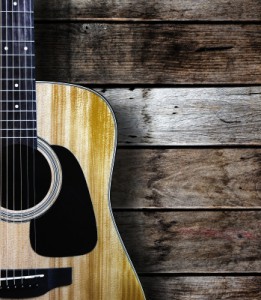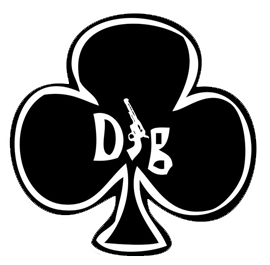Dig a bit deeper into music with some basic history, theory, and music appreciation knowledge. Discover the science that your ears and brain wire together and call music. View all
 I’m hoping by now you’ve read Ivan’s great post about the history and importance of flatpicking. Though a seasoned musician, it’s a relatively new topic to me and one I’ve been looking at a lot lately. Recently, while hoping to improve my acoustic and bluegrass guitar soloing chops, I searched around for some tips on scales and chord shapes to use. In doing so, I found such a travesty of misguided music theory and wildly unmusical thinking, I just had to share.
I’m hoping by now you’ve read Ivan’s great post about the history and importance of flatpicking. Though a seasoned musician, it’s a relatively new topic to me and one I’ve been looking at a lot lately. Recently, while hoping to improve my acoustic and bluegrass guitar soloing chops, I searched around for some tips on scales and chord shapes to use. In doing so, I found such a travesty of misguided music theory and wildly unmusical thinking, I just had to share.
In all of the methods of a approaching all of the instruments I’ve ever seen (and I used to work at Hal Leonard, the largest music publisher in the world), I can think of nothing worse than the CAGED system for guitar. Despite their super legit scammy looking website and dozens of straight-forward confusing and complicated YouTube tutorials, it’s an utterly ridiculous system for approaching guitar soloing. I guess it’s a good thing my former employer carries only one CAGED guitar method book.
The CAGED System – Overview
Whereas most music pedagogic practices focus on learning theory, harmony, and history behind the notes played, the CAGED system sells itself as a magic bullet that gets around needing to know much. The system works by repeating 5 open chord shapes, C, A, G, E, and D up the fretboard and moved through each scale. The idea is that you learn the pattern all the way up the neck, you create a “C” chord on your starting note, and then let the system take over.
Overly Complex
My initial complaint with the system is how complex and unnatural it feels. I’ve been drilling scales on various instruments for 15 years, and have been playing guitar competently for a decade, but this system made my muscles and brain work. Take a look at this section moving between the A and G shape that the instructor even calls a big stretch. Not only is there the stretch, but the pinky is brought into play and only the bottom two and top string of the guitar are used. You’re using your weakest finger all on its own up top while putting as many unused strings as possible between your fingers. There’s a reason these are open-chord shapes and not soloing techniques.
Disassociating Melody from Harmony
If after watching the rest of that video and looking at the diagrams on the system’s very own homepage don’t convince you that the technique alone is too confusing, maybe some music appreciation will. Hilariously, the system calls out “Un-awareness of the importance of the underlying chords” as one of the key indicators of poor soloing, but I can’t think of any better way to disassociate underlying chords and solo pitches than by naming pitches after chords you’re not using, which is the ENTIRE PREMISE OF THE SYSTEM. I shudder to think of the musician who thinks in terms of “I”m making an E shape while soloing in B-flat.”
Lack of Scale Tones
Another terrible part of the system, as evidenced by its very own videos and diagrams, is that scale tones are omitted, leaving gaping holes in scalar patterns. Cruise around YouTube and you’ll find very few videos of people actually playing licks or solos with the system, only 15-20 minute explanations of how it works. When you do find a solo example, you’ll notice a lot in it that wasn’t covered in the preceding 20 minutes.
General Application
And finally, if you’re not yet convinced, keep in mind that this system does nothing to help your playing out on other instruments. Most lessons learned in music can be transferred across instruments and genres, but a system that relies entirely on open chord shapes of guitar only helps when playing guitar. When practicing scales, arpeggios, rhythms, or phasing on most instruments, you can transfer knowledge learned into another aspect of your musicianship. The CAGED system only works when playing guitar, and only when soloing, and only kinda.
The Alternative, the Clear Winner, the Pentatonic Scale
So, what do you do instead? Scales. Seriously, just practice your scales: major, minor, and definitely pentatonic. The pentatonic scale deserves a post of its own, but even the briefest of explanations reveals why it’s a stronger system than CAGED.
- The pentatonic scale uses only 5 notes, which is easier to remember than 5 chord shapes.
- The scale uses only whole steps and minor thirds and never skips a string (in fact there are always 2 notes per string), which is easier for both your brain and fingers to keep straight.
- The same pentatonic scale can be used for major or minor keys (It’s a scale, dummy, so relative major and minor apply to it).
- Blues, bluegrass, jazz, rock, gospel, metal and nearly all modern pop music are deeply rooted in the scale.
- Learning the pentatonic scale on guitar transfers directly to playing it on bass, ukulele, or any instrument tuned in 4ths.
- The pentatonic scale (though admittedly not the exact hand shapes) can be used on any instrument.
The real proof though, this is music after all, is how it sounds. Check out this guy soloing in one easy pentatonic position at the end of a relatively short and simple instructional video.
As the man in the video said, I do hope you learned something… you take care now and I’ll see you later.

